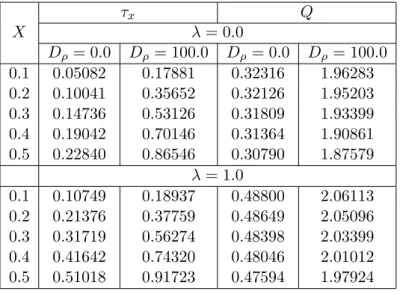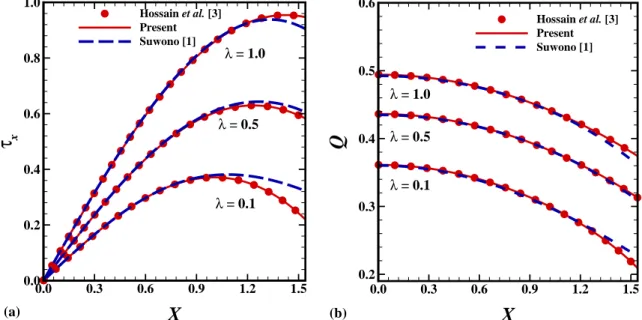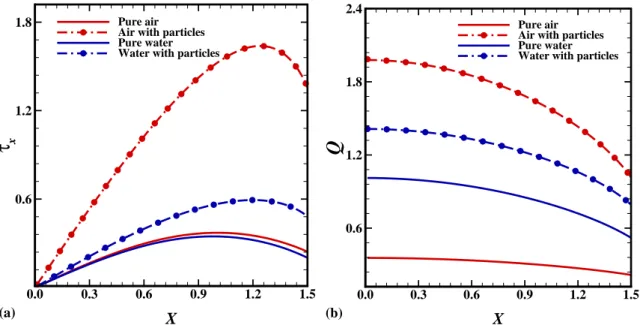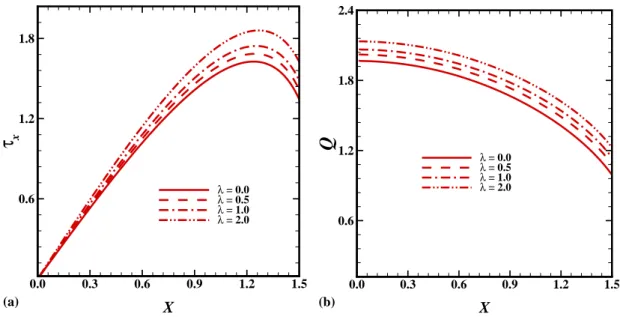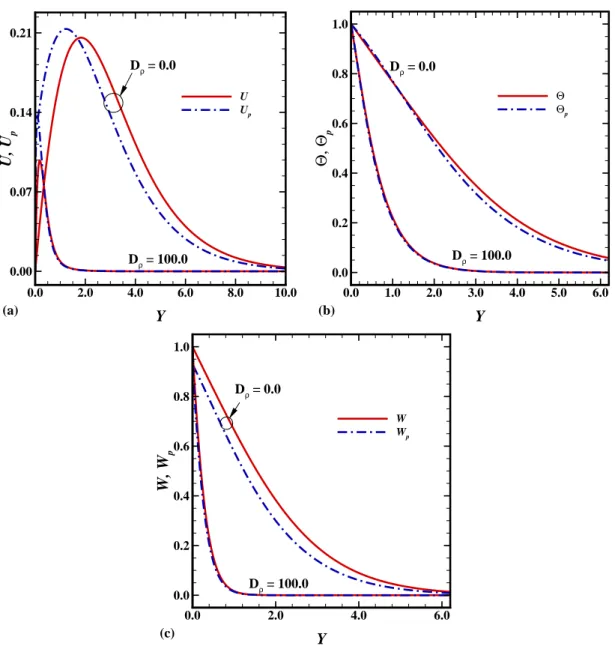No. 562 Februar 2017
Two-phase Dusty Fluid Flow Along a Rotating Axi-symmetric Round-Nosed Body
S. Siddiqa, N. Begum,
M. A. Hossain, R. S. R. Gorla
Two-phase Dusty Fluid Flow Along a Rotating Axi-symmetric Round-Nosed Body
Sadia Siddiqa ∗ ,1 , Naheed Begum ∗ , † , M. A. Hossain § , Rama Subba Reddy Gorla ‡
∗ Department of Mathematics, COMSATS Institute of Information Technology, Kamra Road, Attock, Pakistan
† Institute of Applied Mathematics (LSIII), TU Dortmund, Vogelpothsweg 87, D-44221 Dortmund, Germany
§ Department of Mathematics, University of Dhaka, Dhaka, Bangladesh
‡ Department of Mechanical & Civil Engineering, Purdue University Northwest, Westville, IN 46391
Abstract: This article is concerned with the class of solutions of gas boundary layer con- taining uniform, spherical solid particles over the surface of rotating axi-symmetric round- nosed body. By using the method of transformed coordinates, the boundary-layer equations for two-phase flow are mapped into a regular and stationary computational domain and then solved numerically by using implicit finite difference method. In this study, a rotating hemi- sphere is used as a particular example to elucidate the heat transfer mechanism near the surfaces of round nosed bodies. We will also investigate whether the presence of dust par- ticles in carrier fluid disturb the flow characteristics associated with rotating hemisphere or not. A comprehensive parametric analysis is presented to show the influence of the parti- cle loading, the buoyancy ratio parameter and the surface of rotating hemisphere on the numerical findings. In the absence of dust particles, the results are graphically compared with existing data in the open literature and an excellent agreement has been found. It is noted that, the concentration of dust particles parameter, D ρ , strongly influence the heat transport rate near the leading edge.
Keywords: Natural Convection, Two-phase, Dusty Fluid, Round-Nosed Body.
1 Introduction
The class of flows along axi-symmetric round nosed bodies has received a notable atten- tion due to their frequent occurrence in shape and optimization of the flying vehicles. For instance, the round-nosed shapes can be visualized on subsonic vehicles. All commercial aircrafts that fly at subsonic speed (i.e. less than the speed of sound) usually have the ideal shape as rounded (parabolic) nose. The interesting effect of nose blunting has been found to be a drag reduction, for some levels of rounding radius, compared with the corresponding sharp nosed body flow. Moreover, rotating spheres and cones are also used as nose cones in aeroengine and spinning projectile applications. The non-similar boundary layer analy- sis is accepted to figure out the distribution of skin friction and heat transfer coefficients along the wall. Rotating round-nosed bodies have been initially exploited by Suwono [1]
to report the effects of buoyancy forces on laminar boundary layer flow. In this paper, the author presented the theoretical analysis of a steady flow and heat transfer for the case of rotating hemispheres for Prandtl number (0.72 < Pr < 100) and buoyancy ratio parameter
1
